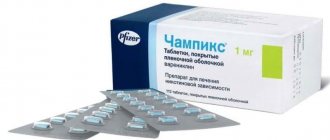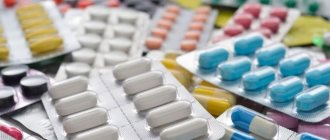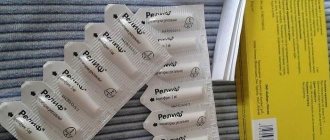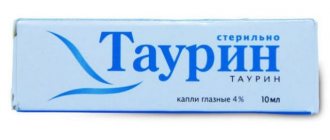In pharmaceuticals, short-acting insulin preparations are isolated. By “cooperating” with specific receptors on the outer cell membranes, these drugs form an insulin receptor complex. They increase liver cell synthesis. In addition, they penetrate directly into the muscles. Soluble insulin has a stimulating effect on intracellular processes.
When is it appointed?
Medicines based on soluble insulin are prescribed to patients in the following cases:
- If you have type 1 diabetes.
- In the presence of type 2 diabetes at the stage of resistance to hypoglycemic oral medications.
- Against the background of partial resistance to hypoglycemic oral medications as part of combination therapy.
- In case of development of diabetic ketoacidosis or ketoacidotic and hyperosmolar coma.
- For diabetes that occurs during pregnancy due to ineffective diet therapy.
- For intermittent use against the background of infections accompanied by high fever.
- Immediately before upcoming surgery or childbirth.
- In case of metabolic disorders.
- In case of switching to treatment with long-acting insulin medications.
Mechanisms of insulin removal from the body
Removal of insulin from the blood (elimination) mainly occurs in the liver and kidneys. More than half of the hormone produced is bound and destroyed when crossing the portal hepatic system. In liver cells, insulin is under the influence of the enzyme insulinase, which disrupts the structural bonds of the hormone. As a result of this effect, hormonal molecules are broken down into amino acids. More than 1/3 of insulin is utilized by the kidneys, where it enters the lysosomes of the tubular epithelium and is decomposed into amino acids.
Medicine dosage
The specialist determines the dose and method of administration of the drug on an individual basis, based on blood glucose levels before meals and two hours after it. Insulin intake also depends on the degree of glucosuria, and in addition, on the characteristics of the diabetic disease.
The drug is administered in different ways. It can be used intravenously or intramuscularly, but this is always decided solely by the doctor. Inject soluble insulin half an hour before meals. Very often this medicine is administered to patients through a dropper. But in the presence of diabetic coma, ketoacidosis, as well as during surgery, intramuscular or intravenous administration is used.
With monotherapy, as a rule, the frequency is three times a day (but if necessary, the procedure is carried out up to six times a day). The injection point changes each time to avoid the development of atrophy, and in addition, hypertrophy of subcutaneous fat tissue.
The average daily dose of soluble [human genetically engineered] insulin is 40 units, and for children 8 units are required. At a daily dosage that exceeds 0.6 units per kilogram of weight, insulin must be administered in the form of two or more injections into different areas of the body. Soluble insulin can be combined with long-acting analogues. The insulin solution is drawn from the vial using a sterile needle. Its sharp end pierces the rubber stopper, which is wiped with ethanol after the aluminum cap is removed.
Now let's look at the negative reactions of the body that can occur when taking soluble insulin.
INCREASED INSULIN PRODUCTION SHORTENS LIFESPAN
Insulin belongs to evolutionarily very “old” peptides. If we turn to evolutionary and ontogenetic data, we can find insulin in bacteria, unicellular organisms, plants, annelids, mollusks, insects and other representatives of the animal world that do not have a pancreatic gland.
This hormone plays a vital role in the life of a wide variety of living creatures, including worms. And since experiments on worms are much easier than on more complex organisms, many of the properties of insulin were revealed precisely in such experiments.
The new study was also conducted on roundworms of the species C. elegans. Boston scientists have discovered that increased insulin production leads to the deactivation of a protein that controls the functioning of a whole group of genes responsible for protecting cells from the damaging effects of free radicals. Since SKN-1 cleanses cells of toxic products of oxidative reactions, it protects the body from premature aging. It follows that increased insulin production shortens life expectancy.
In early 2000, scientists from the University of Michigan Medical School (USA) created the Yoda mouse, which lived for over 4 years, while the lifespan of an ordinary laboratory mouse is 2 years. Such amazing results were achieved through genetic modification of the rodent. Scientists modified his pituitary gland, thyroid and pancreas, as a result of which the mouse’s body began to produce less insulin.
And although Yoda was three times smaller than his brothers and very sensitive to cold, he was distinguished by amazing mobility and remained sexually active until the end of his days.
If we take the above text as an axiom, it turns out that if you maintain normal glycemia, then a diabetic lives longer than an ordinary person. This is true for type 1 diabetics, but for type 2 diabetics whose insulin secretion is increased, on the contrary, their lives will be shortened.
Therefore, we need to keep insulin levels low if we want to live longer or keep sugar levels low with insulin-boosting medications if we want to die young!
Insulin sensitivity is the most important factor in recovery and change in your body composition. Use the glycemic index, insulin index and choose your diet wisely to get your body into peak shape.
Obviously, the main reason for the increased mortality rate in patients with type 2 diabetes who use insulin and insulin secretagogues is excess insulin.
Side effect
When using soluble [human genetically engineered] insulin for treatment, all sorts of allergic reactions in the form of urticaria, angioedema, fever, shortness of breath and low blood pressure are quite likely. In addition, patients often experience the following side effects:
Diseases associated with the action of insulin
Both insufficient and excessive concentrations of insulin in the blood cause the development of pathological conditions:
- insulinoma is a tumor of the pancreas that secretes large amounts of insulin, as a result of which the patient often experiences hypoglycemic conditions (characterized by a decrease in the concentration of glucose in the blood serum below 5.5 mmol/l);
- diabetes mellitus type I (insulin-dependent type) – its development is caused by insufficient production of insulin by the β-cells of the pancreas (absolute insulin deficiency);
- diabetes mellitus type II (insulin-independent type) – pancreatic cells produce insulin in sufficient quantities, but cell receptors lose sensitivity to it (relative insufficiency);
- insulin shock is a pathological condition that develops as a result of a single injection of an excessive dose of insulin (in severe cases, hypoglycemic coma);
- Somogyi syndrome (chronic insulin overdose syndrome) is a set of symptoms that occur in patients receiving high doses of insulin for a long time.
Drug overdose
In case of overdose, symptoms of hypoglycemia may occur, which will manifest itself in the form of weakness, cold sweat, pale skin, palpitations, trembling, nervousness and hunger. In addition, paresthesia in the hands, legs, tongue and lips is possible. Headaches along with hypoglycemic coma and convulsions are not excluded.
As part of treatment, patients can treat mild hypoglycemia on their own by ingesting sugar. Foods rich in easily digestible carbohydrates are also perfect.
As the temperature rises
If a diabetic has a temperature rise of more than 37.5 degrees, it is necessary to measure blood sugar levels and additionally administer a dosage of short-acting insulin. Throughout the entire period of temperature change, insulin must be administered before meals. On average, the dosage needs to be increased by 10 percent.
When body temperature increases to 39 degrees or higher, the daily dosage of insulin increases by 20-25 percent. In this case, there is no point in administering long-acting insulin, since it is quickly destroyed under the influence of high temperature.
The dosage should be evenly distributed throughout the day and administered every 3-4 hours. After this, you need to eat easily digestible carbohydrates until your body temperature returns to normal. If acetone appears in the urine, it is necessary to switch to insulin therapy described above.
Insulin preparations
“Rinsulin R” is human insulin, characterized by an average duration of action, it is produced using recombinant DNA technologies. It interacts with specific receptors on the outer cytoplasmic membranes of cells, forming insulin receptor complexes. Thanks to Rinsulin R, intracellular processes are stimulated, especially the synthesis of a number of key enzymes (hexokinase, glycogen synthetase, pyruvate kinase).
The decrease in glucose content is explained by an increase in its intracellular transport, and in addition, a decrease in the rate of glucose production by the liver. The duration of action of insulin drugs is mainly explained by the rate of their absorption, which depends on a number of factors, for example, on the dosage, and in addition, on the method and site of administration. In this regard, the profile of insulin exposure in the same patient is subject to significant fluctuations.
WHAT AMOUNT OF INSULIN SHOULD BE IN THE BLOOD OF A HEALTHY PERSON?
Fasting insulin should be less than 5 µU/ml and 2 hours after a glucose load should not rise more than 30 µU/ml.
If you have such an analysis, you are healthy!
The amount of insulin does not change only in the blood of young children, and when puberty begins, its level becomes dependent on food intake. That is, when food enters the body, insulin levels rise sharply. Therefore, tests for insulin levels are carried out only on an empty stomach.
The cells of our body are like a spaceship bombarded by meteors (hormones and nutrients). Therefore, neither hormones nor cells exist in isolation from the rest of the body. When we focus on one thing, we risk missing out on much more. So, when setting goals and developing a plan, stick to your approach. Don't try to follow someone else's path or follow a program from a magazine. Go your own way!
The Parable of God and the Farmer
One day a farmer came to God and said:
- Listen, You are God and You created the world, but I can tell You one thing - You are not a farmer. You don't even know the basics of farming. You need to study a little.
- What do you suggest? - asked God.
“Give me one year, let everything happen as I want, and see what happens.” There will be no more poverty.
God agreed and gave the farmer one year.
Naturally, the farmer asked for the best. There was no storm, no lightning, no frost, nothing dangerous to the crop. If he wanted sun, there was sun; when he wanted rain, it rained, and exactly as much as he wanted. This year everything was right, everything was mathematically accurate. The farmer received everything he needed, everything most favorable, and was happy. The wheat has grown very tall!
And so the farmer came to God and said:
- Look, this time the harvest is such that even if people don’t work for 10 years, there will be enough food.
But when the harvest was harvested, there were no grains in the wheat.
The farmer was incredibly surprised. He asked God:
- Why did it happen so? What did I do wrong?
God said:
- The reason is that there was no resistance, there was no conflict, there was no struggle for survival... You eliminated everything unfavorable, and the ears of your wheat remained empty! A little struggle would be just right for her. And storms are necessary, and thunder and lightning! They would awaken the Soul of Wheat, and you would get a good harvest!”
The drug "Actrapid NM"
Indications for the use of this medicine are the following diagnoses:
Insulin: storage and disposal
Store unopened insulin vials, unopened disposable dosing devices, and unopened insulin pens in the refrigerator. Do not freeze insulin or use frozen insulin. Opened vials of insulin should be stored either in the refrigerator or at room temperature, in a cool place away from heat sources and direct sunlight. Throw away medications that are outdated or no longer needed. Talk to your doctor or pharmacist about how to properly discard your medications.
The drug "Biosulin R"
This medicine interacts with specific receptors on the outer cytoplasmic membranes of cells, forming an insulin receptor complex that stimulates intracellular processes. In addition, with the help of Biosulin R, the synthesis of key enzymes is stimulated, which are hexokinase along with pyruvate kinase and glycogen synthetase. This drug should not be used if you have an individual sensitivity to insulin, or to other components of the drug.
The essence of the hormone
Insulin is a peptide-type hormone produced by the pancreas in beta cells - the islets of Langerhans. It directly or indirectly affects metabolic processes in almost the entire body, which makes it a very important hormone in the body. But the main purpose is to ensure the absorption of glucose by cells, which reduces its content in the blood.
Glucose is considered one of the most important carbohydrates in the human body, and almost all sugars in the digestive system are converted into it. It is glucose that is the main energy source for all cells, and primarily muscle and nerve cells. However, in order for cells to assimilate glucose, insulin is required, which, by acting on specific receptors, ensures this assimilation. The hormone is a kind of key that opens the cell door for the passage of glucose.
The role of insulin is most noticeable in muscle (myocytes) and fat (adipocytes) tissues, which, without the influence of insulin, practically lose the ability to absorb glucose, which is why they are called insulin-dependent tissues. Such tissues make up significantly more than half of the entire cellular structure and are responsible for movement, respiration, and blood circulation. In general, insulin has both anabolic and anti-catabolic effects.
About componentization
The number of components depends on the following divisions of insulin types. If a medicinal preparation contains an extract of the pancreas of only one animal (bull or pig), then such a remedy is monotype. If several types of animal insulins are combined at the same time, then this is a combined remedy. Insulin preparations should be chosen only on the recommendation of a doctor. Insulin preparations will be beneficial only if used correctly; the classification of drugs is taken into account when choosing.
About purification levels
The need for purification of the hormonal active substance varies in degree (a special classification is also used here), so purification can be of different types:
- traditional type means make the drug more liquid, and acidic ethanol helps. Then filtration, salting out and repeated crystallization begin. This cleaning method is common, but it is not ideal; the material composition contains a large number of impurities;
- monopeak type substance - the first purification stage is done using the traditional method, then a special gel is used for filtration. With this method, the amount of impurities is less than with the first method;
- a monocomponent type product - it is cleaned deeply by molecular sifting; in terms of efficiency, this method is the most effective. The use of such drugs can be in tablets, which is very convenient for certain categories of patients. There are different types of insulin tablets.
Hormonal categories
There are different types of insulin preparations; a detailed list must be provided. There are some types of classifications, so the endocrinologist selects those types that are suitable for a particular type of treatment. There are different types of medications, and their origin can also be different:
- insulins, which are synthesized by the bovine pancreas. It differs from human hormones in that the three amino acids are different. This is the reason for the frequent occurrence of various types of allergies;
- Porcine insulin is close to the structure of the human hormone. Only one amino acid in the protein chain differs; such insulins are often used;
- The whale apparatus differs significantly from the human hormone, the differences are more significant than in bulls. Therefore, its use is rare; such insulins are not highly effective;
- analogous to the human type, it can be synthesized in different ways. Leading experts every year develop new types of synthesis, which are characterized by increased efficiency.









